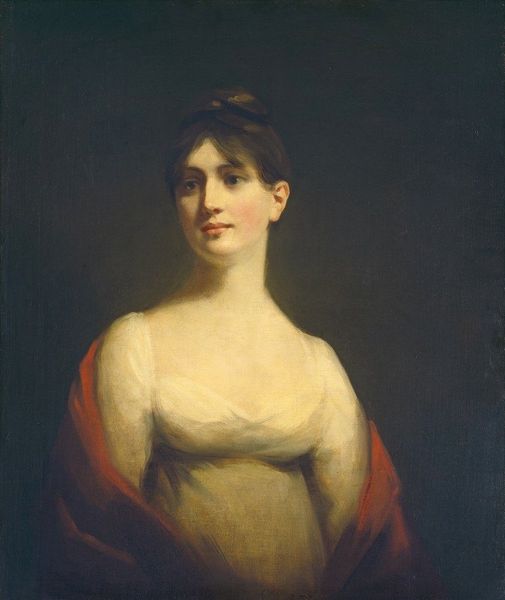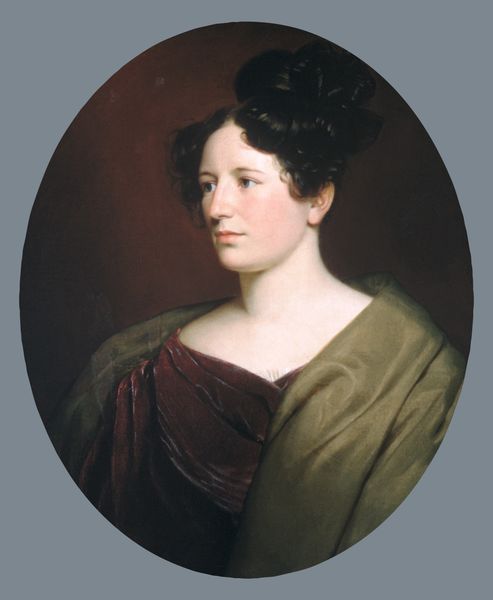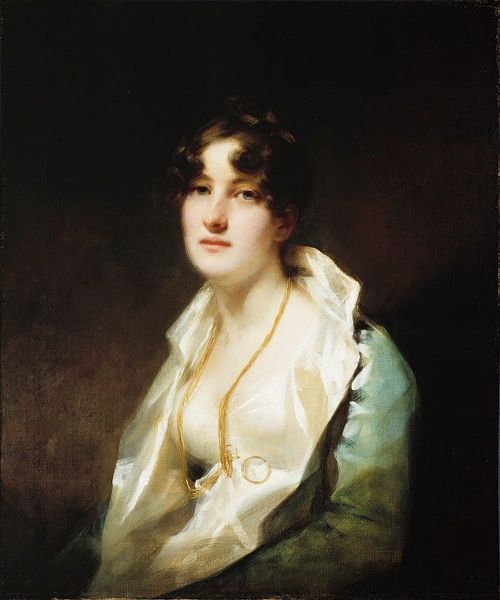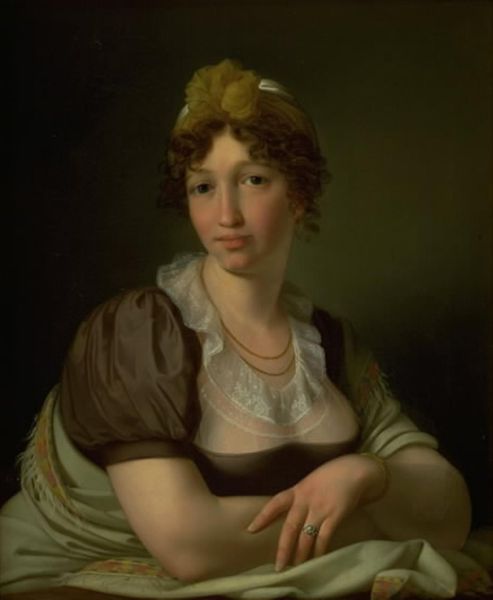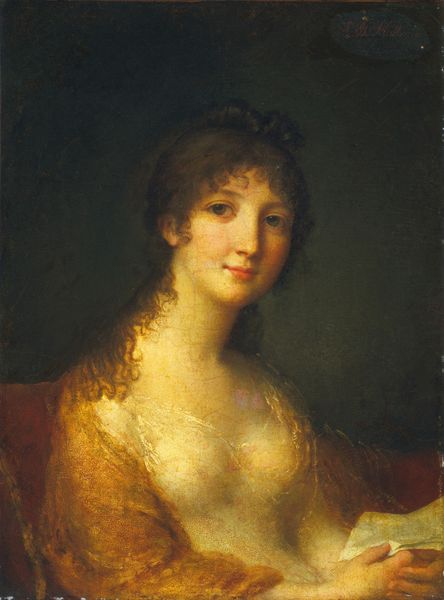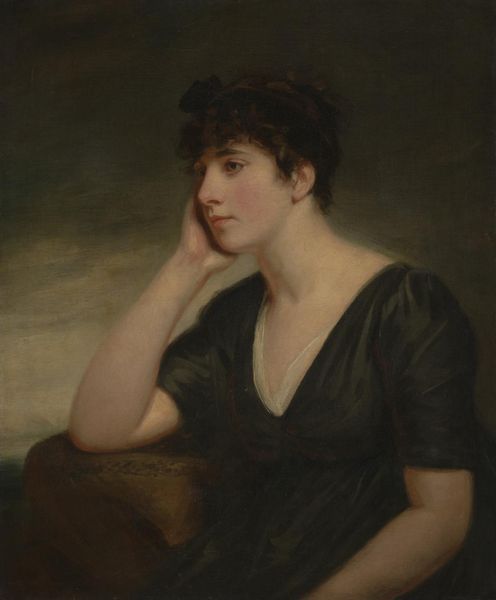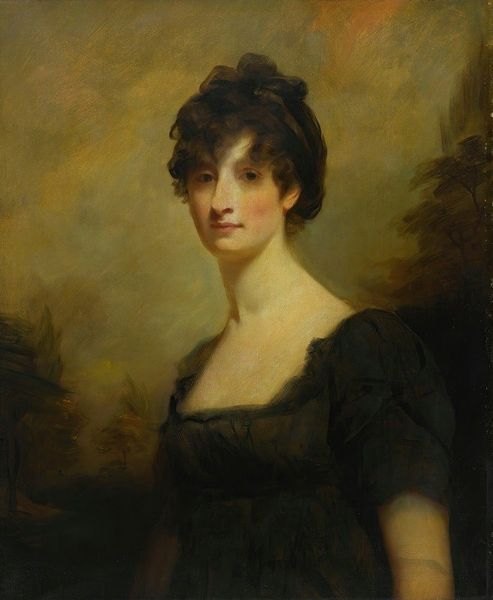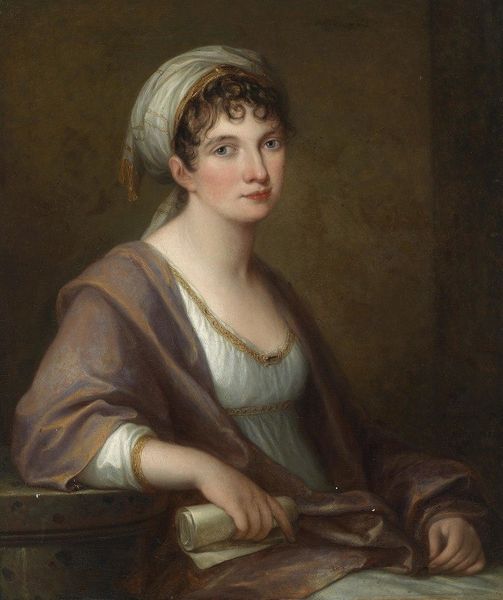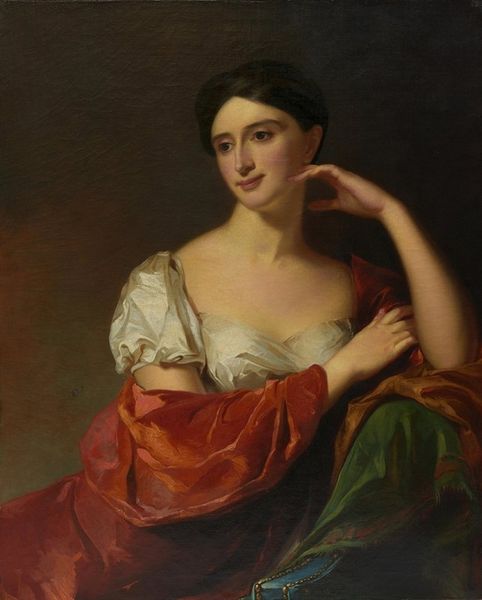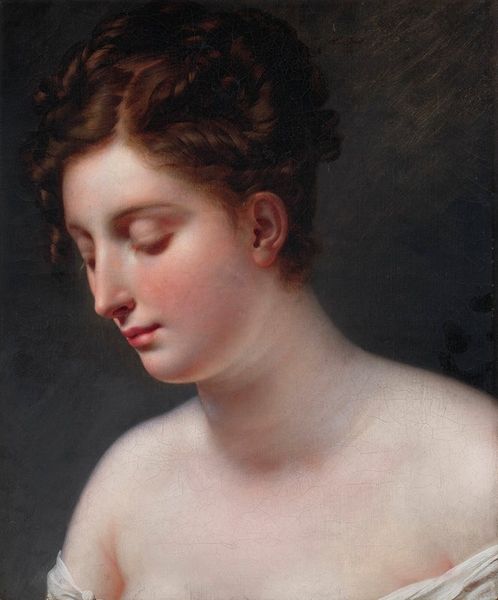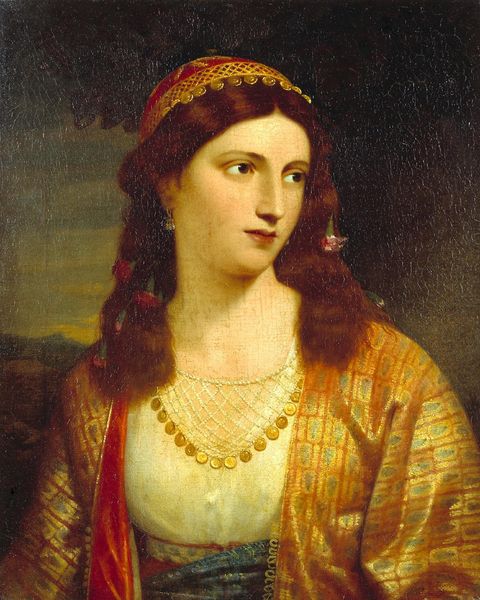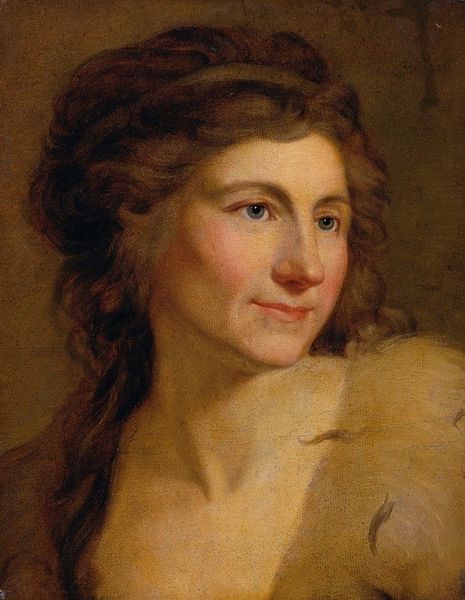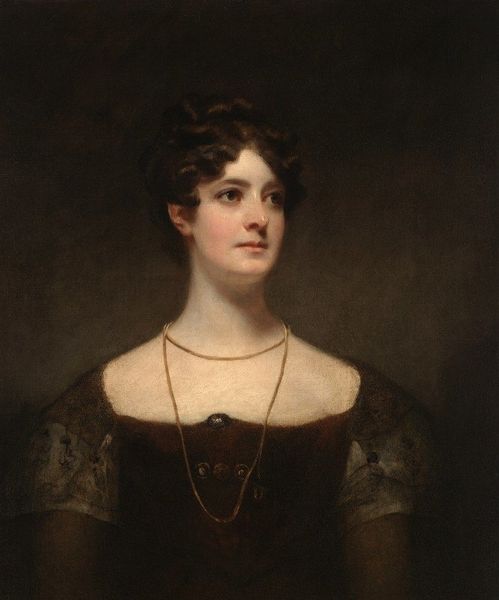
#
figurative
#
male portrait
#
portrait reference
#
portrait head and shoulder
#
animal portrait
#
animal drawing portrait
#
portrait drawing
#
facial portrait
#
portrait art
#
fine art portrait
#
digital portrait
Copyright: Public Domain: Artvee
Editor: Here we have Henry Raeburn’s "Mrs. Irvine J. Boswell", painted around 1820. It’s captivating – a fairly simple composition, but there's something in her gaze that holds your attention. What stands out to you about this portrait? Curator: It's interesting how Raeburn portrays Mrs. Boswell, placing her firmly within the rising middle class. Notice the carefully constructed image, not just of individual likeness, but of societal standing. Consider the power of portraiture in this era to signal wealth and aspiration, functioning almost like a public announcement of status. Editor: So, more than just capturing her appearance, Raeburn is portraying her role in society? Curator: Precisely! Think about who commissions portraits and why. What message are they trying to convey to their community, and to posterity? Her clothing, hairstyle – these are all carefully selected signifiers. Also, who had access to seeing this painting? Editor: Probably those within her social circle or visitors to their home. It was a private display of public identity. Curator: Exactly. And how does the very act of display affect the understanding and the "value" of the art? It's not simply aesthetics; it's about power, influence, and the shaping of narratives. How is her image, or rather, how this public version of her image being framed by the artist and then framed literally within her social milieu? Editor: That adds another layer of complexity I hadn't considered. The portrait is almost a performance, both by the artist and the sitter, staged for an audience. Curator: It invites us to question what portraits like this did for the sitter, the artist, and the evolving cultural values of the era. Editor: This makes me view portraiture from that period in a different light. It’s not just about individual representation, but about the social and political theatre. Curator: Exactly! Hopefully this can let our visitors begin to understand and ask the next layer of questions!
Comments
No comments
Be the first to comment and join the conversation on the ultimate creative platform.
